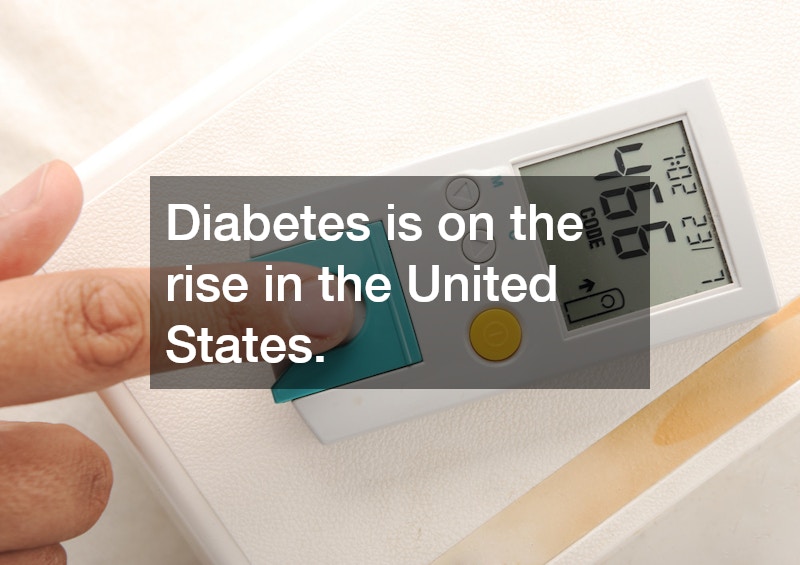
According to the CDC (Center For Disease Control), diabetes is on the rise in the United States. It’s crucial, now more than ever, for people of all ages to take responsibility for testing and managing diabetes. As of 2022, 11.3% of Americans have been diagnosed with the disease. That’s 37.3 million people across all ethnic, social, and economic backgrounds. It’s also believed that approximately 8.6 million people have the condition but have yet to be diagnosed.
Other diabetes research and wellness studies show that of patients over 65, 48.8% of them have prediabetes, and the numbers are increasing year over year. As this epidemic grows, so does the need for a dietary program and diabetes management.
Newly diagnosed diabetic patients need to know how high blood glucose levels affect their blood flow throughout the body. Blood & sugar don’t mix well, and when there is too much sugar in the blood, it can become syrupy and cause it to move more slowly through the body. This slows down the healing process when injured and affects other parts of the immune system.
It is more essential than ever to keep an adequate supply of diabetic test strips to monitor your blood glucose levels and talk to your doctor about any diabetes management programs available in your area to help you manage diabetes and possibly overcome it. Even when caring for others, it’s important to know what to do to help them manage their diabetes. Caregivers play a crucial role in this process, and their support is invaluable.

Statistics show that nearly 1.4 million people in the United States are diagnosed with diabetes each year. Diabetes is a disease known to affect senior citizens. Nearly 25.9% of the senior citizen population lives with diabetes. It’s important to know how to properly care for someone with this condition. Here are five tips for ensuring someone receives proper diabetic care.
- Always Have Adequate Testing Supplies
An essential part of living with diabetes is regularly administering blood sugar tests. There are a few different types of diabetic testing that can be performed. There are a few ways that a diabetic can test their blood sugar, most often through urine or blood. Using diabetic testing supplies also helps to detect the presence of ketones. The body produces ketones as energy when no carbohydrate sources are available. If diabetics don’t monitor insulin levels, an excess of ketones can occur within the blood. Having too many ketones can cause the blood to become acidic which is extremely dangerous. - Administer Insulin When Necessary
If blood sugar levels are too high, you’ll need to use syringes for diabetes. These diabetic syringes ensure diabetics safely receive the insulin they need. You might want to make use of a single use syringe when living with another diabetic. A single use device ensures there are no instances where syringes for diabetes are shared. It’s best to purchase insulin syringes for diabetes in bulk as these items will always be needed. Many people living with diabetic make use of an insulin cooler. When insulin is stored at room temperature, it drastically reduces its shelf life. An insulin cooler helps keep this material safe for much longer than room temperature storage. - Keep an Organizer Handy
Medical technology has helped to make living with diabetes much easier. You’ll still have lots of supplies, including syringes for diabetes, that need to be properly stored. Luckily, there are medical organizers specifically available for those with diabetes. There is a wide range of medical organizers available in many sizes. Discreet medical organizers can easily store diabetic supplies within a purse or handbag. Certain diabetic medical organizers include a cooling pouch for keeping insulin safely stored. - Purchase a Medical ID Bracelet
There might be times when a diabetic needs to go out in public by themselves. Unfortunately, an episode of low blood sugar can happen at any time. A medical ID bracelet clearly lets people know that someone is diabetic. Someone dealing with low blood sugar often looks or acts impaired. A person with a medical ID bracelet can easily let people know the reason for their impairment. - Cooking New Types of Meals
One aspect of living with diabetes is following a certain diet. It’s understandable that a diabetic may grow tired of eating the same dishes. You’ll find it wise to purchase a few diabetic cookbooks. These books are filled with recipes for breakfast, lunch, dinner. Using a diabetic cookbook can help someone living with diabetes try many new dishes. It’s a common misconception that diabetics aren’t allowed to eat dessert which isn’t true. There are many diabetic cookbooks available, especially ones that include delicious desserts.
In closing, there are several helpful ways to care for a diabetic. Statistics show that 9.3% of adults with diabetes only have this condition, helping to make care more manageable. An essential aspect of diabetic care is ensuring regular blood sugar tests are performed. You’ll want to ensure you have diabetic syringes on hand if insulin needs to be administered. A medical organizer works well to keep track of diabetic supplies. There can be instances where a diabetic is away from those who provide care. A diabetic can simply point to their medical ID bracelet in the event a low blood sugar episode occurs.

